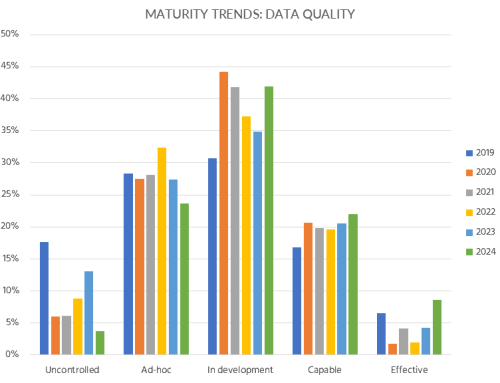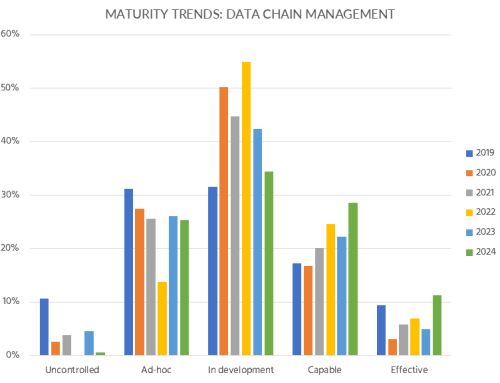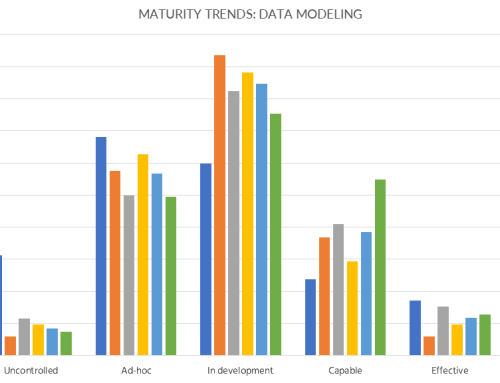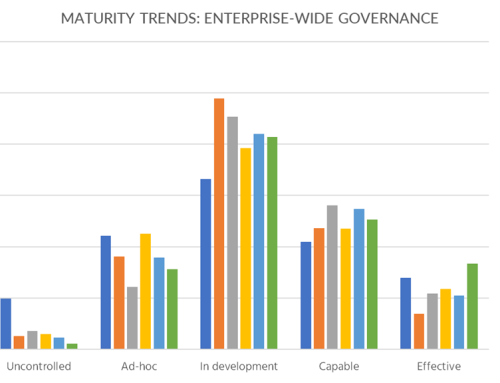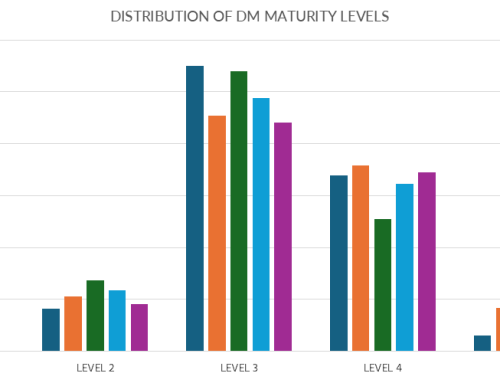This article demonstrates maturity trends for data and application architecture.
This is the fourth article in the series Tracking Data Management Maturity: A Five-Year Perspective (2019–2024).
Its purpose is to examine the evolving trends in the data and application architecture capability and to introduce a new approach to measuring maturity based on the outcomes of these capabilities.
In this article, we will:
- Define the data and application capability within the context of the O.R.A.N.G.E. Data Management Framework, including its goals and key outcomes
- Highlight five-year trends in the development of this capability and its underlying components
- Provide practical recommendations for further strengthening data and application architecture maturity
Let’s begin by defining what the data architecture capability for data management entails, along with its goals and measurable outcomes.
Data and Application Architecture
Challenges
The key challenge with this capability is that it has not been uniquely defined across the leading industry guidelines, including DAMA-DMBOK2, DCAM®, CDMC™, and the TOGAF® Standard (see Figure 1).
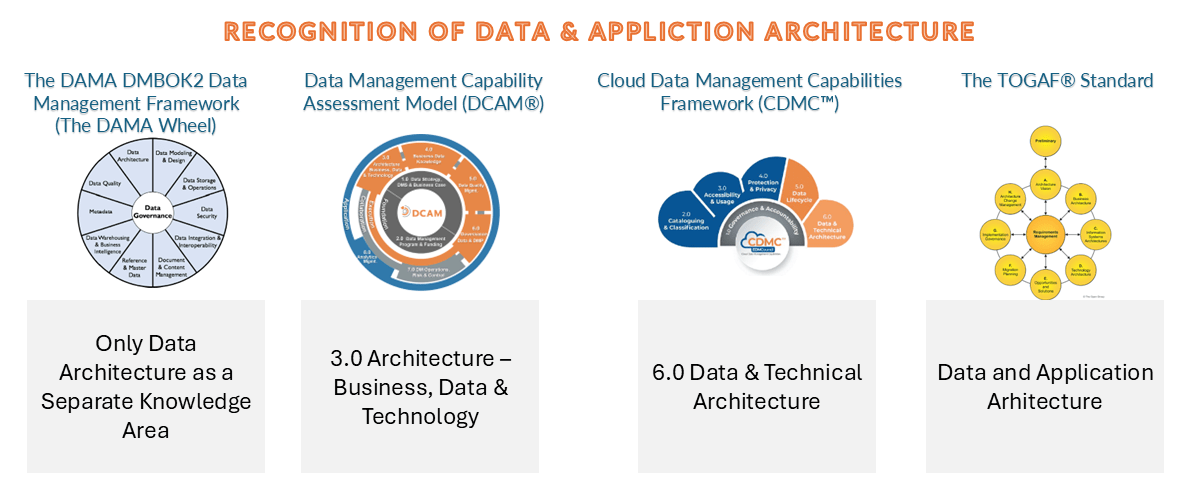
Figure 1: Data and application architecture capability across industry guidelines.
The DAMA-DMBOK2 recognizes only Data Architecture as a distinct Knowledge Area and defines it as “identifying the data needs of the enterprise (regardless of structure), and designing and maintaining the master blueprints to meet those needs.”
Two guidelines from the EDM Council—DCAM® and CDMC™—take different approaches. DCAM® 3.0 identifies three types of architecture: business, data, and technology. In contrast, CDMC™ focuses solely on data and technology. Notably, neither guideline explicitly includes the term application architecture. It is unclear why this is the case, but it is likely that both frameworks consider it either part of data architecture, technology architecture, or both.
The TOGAF® Standard, a leading enterprise architecture framework, distinguishes between data and application architectures, grouping them under the umbrella of information systems architecture. While this term is rarely used in the data management community, I apply it in this article—and the broader maturity review—as it accurately reflects the combined nature of these two architectural domains.
Definition
The O.R.A.N.G.E. Data Management Framework, which I’ve developed, applies the following definition of the information systems architecture:
Management of information systems architecture is a company’s ability to design, maintain, and control the implementation of artifacts associated with data, metadata, and application architecture.
The O.R.A.N.G.E. framework aligns with the TOGAF® recommendations and views information systems architecture as a sub-capability of data management, as illustrated in Figure 2.
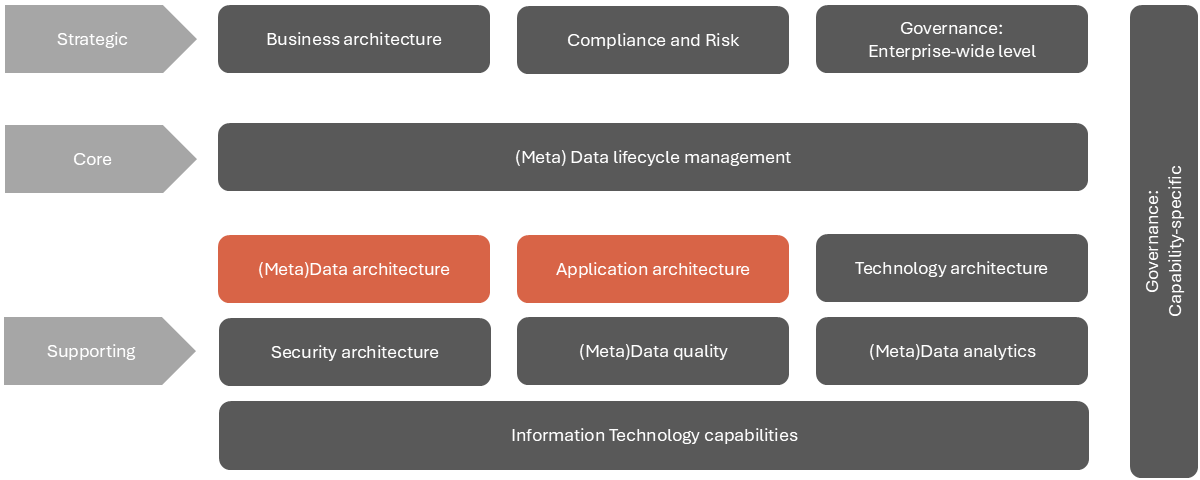
Figure 2: The Data Management Capability Map.
Information Systems Architecture Capability: Purpose, Outcomes, and Capability Components
The purpose of a capability represents its high-level aspiration—it answers the question: “Why does this capability exist?” It is stable over time and cannot be directly measured.
For the information systems capability, the purpose can be defined as follows:
Establish a scalable, consistent, and business-aligned data and application landscape that supports effective operations, informed decision-making, digital innovation, and regulatory compliance.
To assess whether this purpose is being fulfilled, we rely on outcomes—measurable results that demonstrate progress toward the purpose. Outcomes answer the question: “What measurable result indicates success?”
Examples of outcomes for the above purpose include:
- Rationalized and cost-effective data and application landscape
Outdated or redundant applications and data stores are eliminated, enabling a more efficient, maintainable, and cost-effective IT environment aligned with business priorities.
- Seamless integration and trusted data availability across the enterprise
A unified architectural design ensures that systems interoperate effectively and that reliable, consistent data is accessible where and when it’s needed.
- Architecture adaptability that supports strategic change and innovation
The modular design of data and application components allows the organization to respond quickly to evolving business needs, technology shifts, and regulatory changes.
Although the capability defines what the organization must do, practitioners also need to understand how, when, and where it should be done. Seven components that enable each business capability not only support measurement—they also operationalize the capability into a functioning business discipline.
Figure 3 illustrates these components and shows how they link to the overall governance capability.
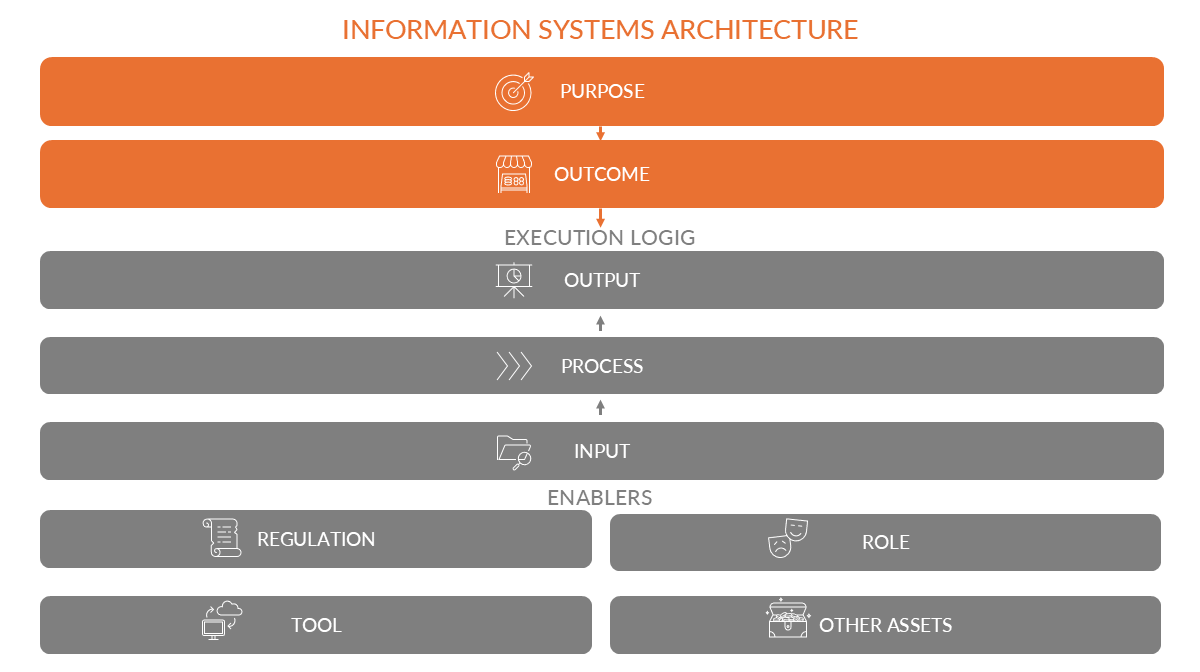
Figure 3: Approach to operationalizing information systems architecture capability.
Designing the information systems architecture capability starts with a clear definition of its purpose—the strategic aspiration it aims to fulfill. Progress toward that purpose is measured through outcomes, which reflect whether the intended value is being delivered.
Each outcome is supported by one or more outputs—the concrete deliverables that signal progress. These outputs result from processes that act on specific inputs, forming the operational core of the capability.
To enable this flow, several components must be in place: regulations to guide activity, roles to carry it out, IT tools for automation, and other supporting assets. While these elements don’t produce outcomes directly, they ensure consistent execution—allowing outputs to be delivered and outcomes achieved.
With this structure in mind, let’s examine how the data modelling capability has evolved over the past five years.
Information Systems Architecture Capability: 5-Year Trends
Between 2019 and 2024, the maturity of information systems architecture has shown steady improvement (Figure 4).
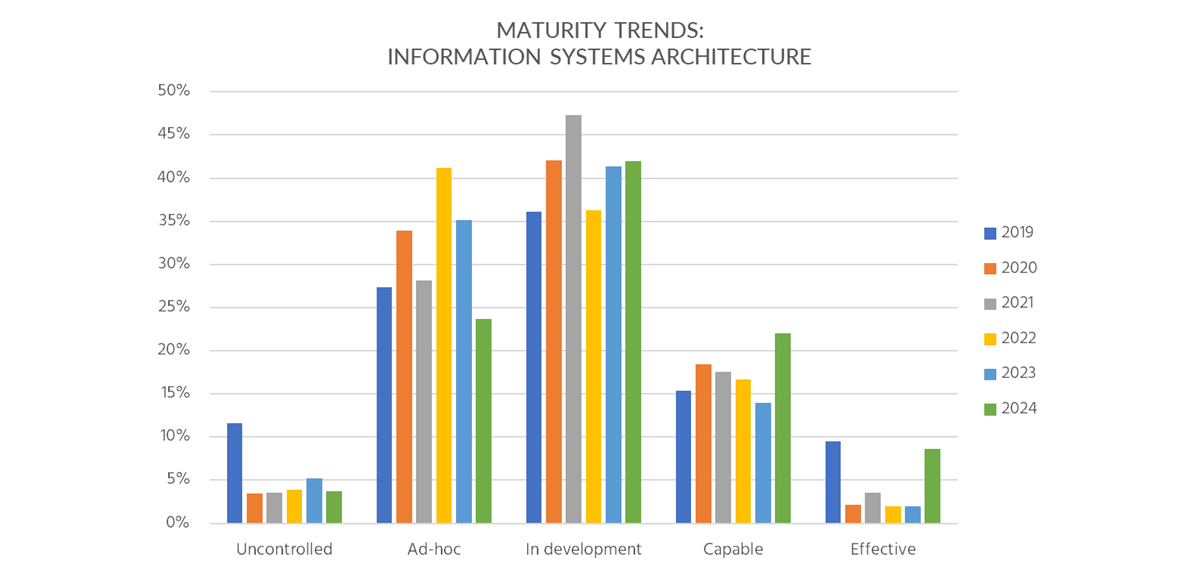
Figure 4: Trends in developing the information systems architecture capability.
While many organizations still operate at the “ad-hoc” and “in development” levels, their share has begun to decline. At the same time, the number of organizations reaching the “capable” level has reached its highest point in six years. A smaller but growing group has also advanced to the “effective” level, signaling progress toward more structured and integrated architecture practices. Overall, the trend reflects gradual but consistent movement toward formalizing application landscapes and aligning them with enterprise objectives.
As discussed earlier, several outcomes can confirm and help measure the purpose’s achievements. However, delivering these outcomes requires the combination of several capability components and particular outputs working together. Therefore, the maturity assessment has been performed for several capability outputs.
Let me demonstrate the trends in their development.
Indicator 1: Optimized Reporting Practices
This indicator helps measure how effectively an organization streamlines and standardizes its reporting processes to ensure consistency, efficiency, and relevance. Trends for this indicator (Figure 5) show a positive shift in maturity between 2020 and 2024.
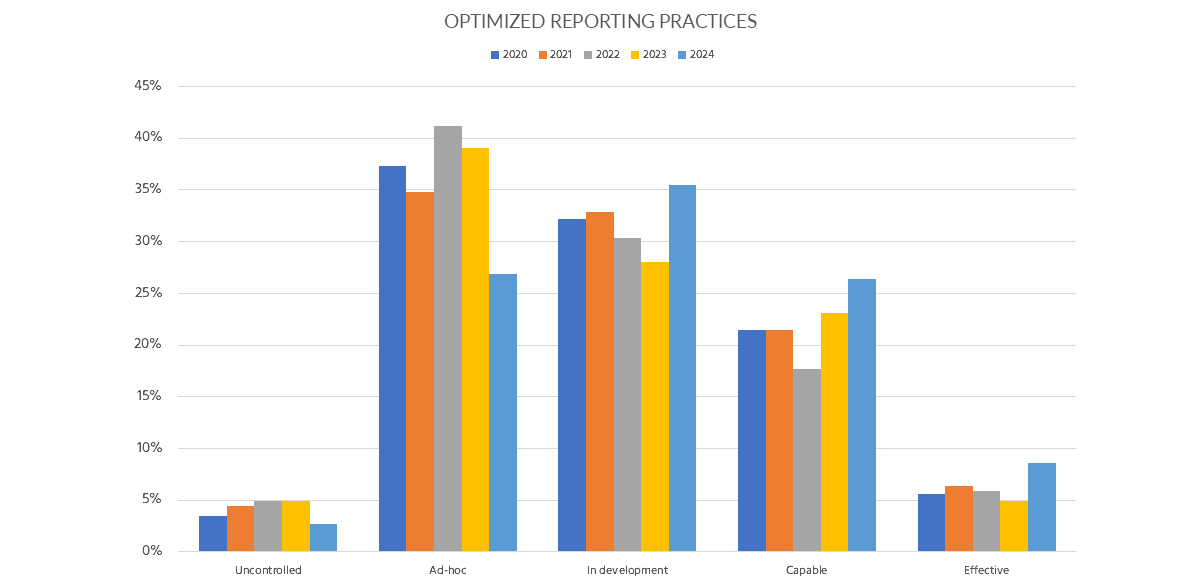
Figure 5: Trends for the indicator “Optimized Reporting Practices.”
The number of organizations operating at the “ad-hoc” level has noticeably declined, while the “in development” stage has become the most common. Both the “capable” and “effective” levels have shown steady growth, indicating that more organizations are adopting standardized, efficient, and reliable reporting practices.
Indicator 2: Optimized Application Architecture
This indicator helps measure the extent to which an organization designs and manages its application landscape to support integration, scalability, and business needs.
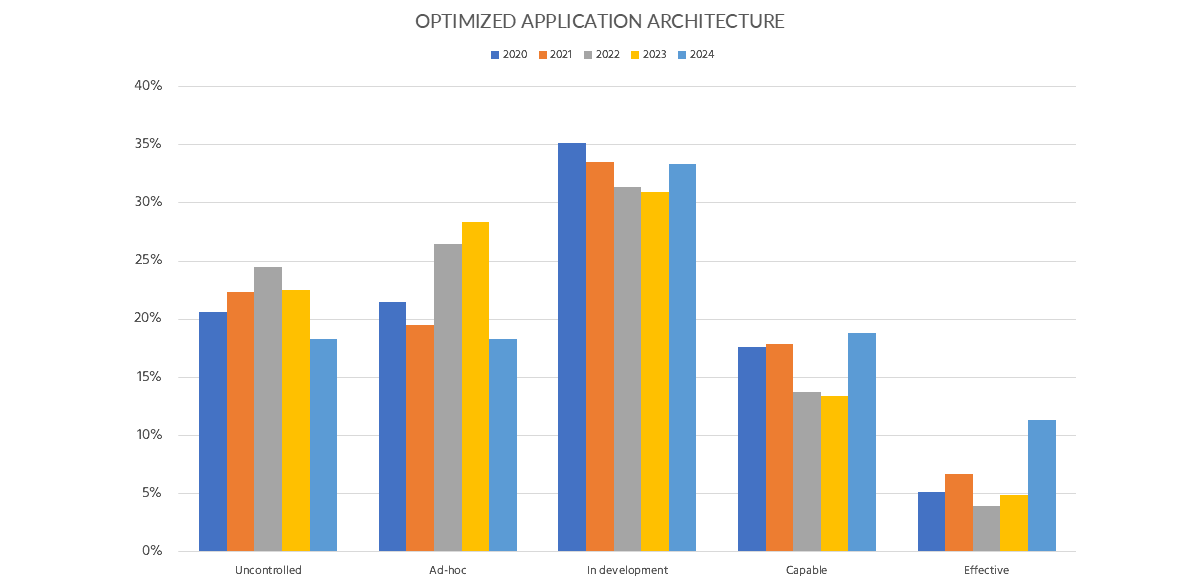
Figure 6: Trends for the indicator “Optimized Application Architecture.”
Figure 6 shows that most organizations are still in the “in development” stage, which remains the dominant maturity level in 2024. However, there is clear progress toward more advanced stages, as more organizations have reached the “capable” and “effective” levels. At the same time, the shares of those at the “uncontrolled” and “ad-hoc” levels have steadily declined, reflecting growing investment in structured, scalable, and integrated application landscapes.
Indicator 3: Master and Reference Data Management
This indicator helps measure how well an organization governs and maintains authoritative data sets to ensure consistency and control across systems. Figure 7 illustrates maturity trends in managing master and reference data.
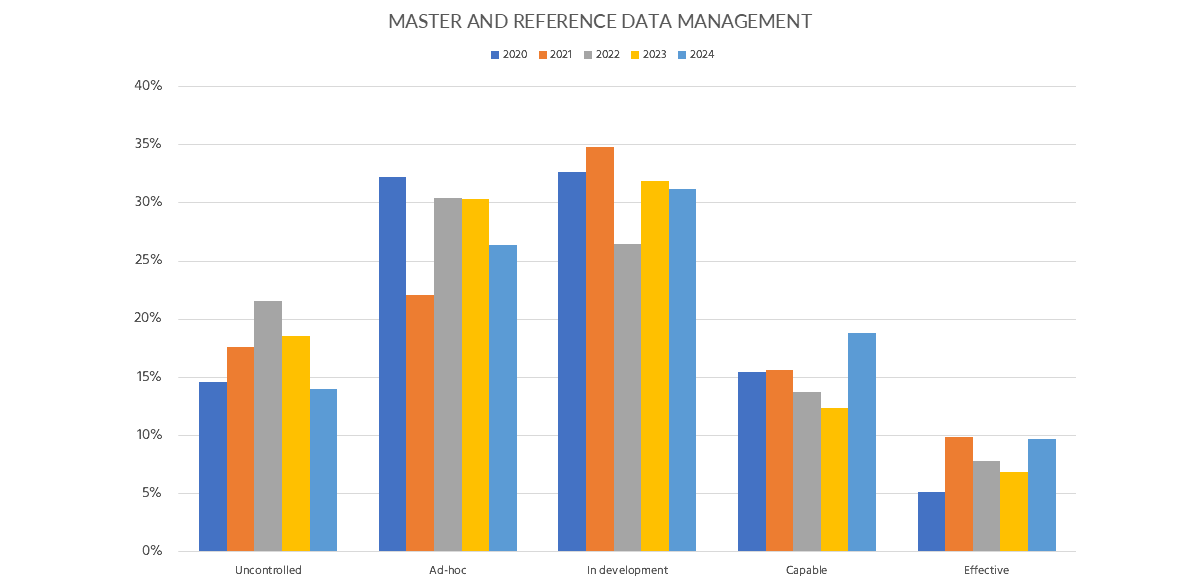
Figure 7: Trends for the indicator “Master and Reference Data Management.”
Over the past five years, organizations have made steady but modest progress in advancing their practices. The “in development” level remains the most common in 2024, while the number of organizations reaching the “capable” and “effective” levels has gradually increased. At the same time, fewer organizations are operating at the “uncontrolled” and “ad-hoc” levels, indicating a growing shift toward more structured and consistent data stewardship across systems.
Indicator 4: Enterprise Architecture Function
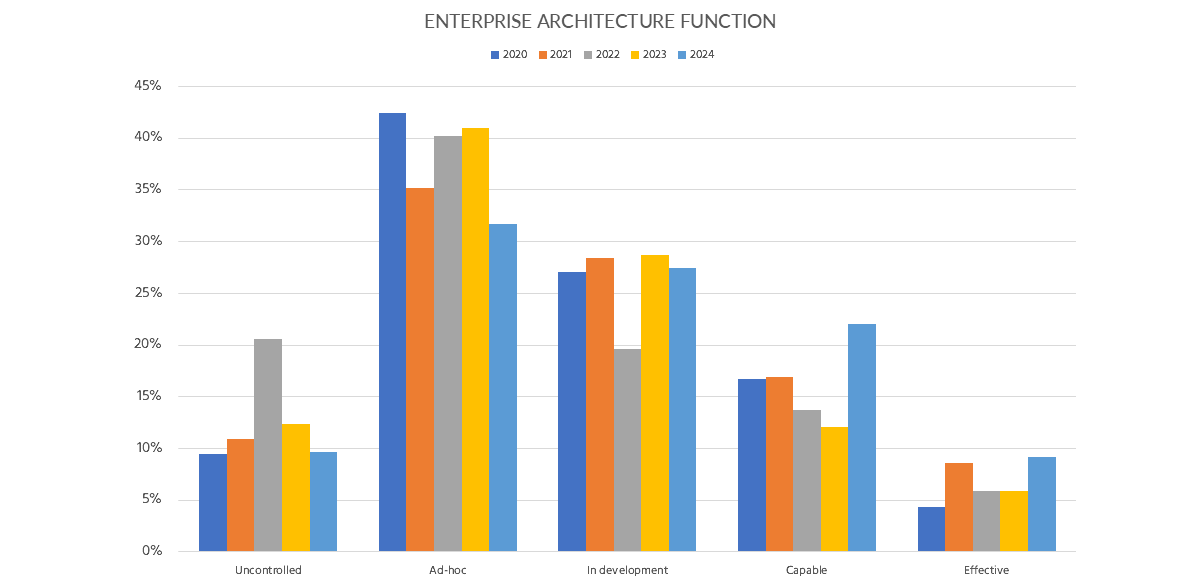
Figure 8: Trends for the indicator “Enterprise Architecture Function.”
This indicator helps measure the presence and maturity of a formal enterprise architecture function that aligns business strategy with IT capabilities.
For this indicator, presented in Figure 8, the data reflects a slow but steady improvement in organizational maturity. While the “ad-hoc” stage remains the most common in 2024, its prevalence has declined compared to earlier years. The number of organizations reaching the “capable” level is at its highest point in the five-year period, and more have advanced to the “effective” level. These shifts indicate that an increasing number of companies are beginning to institutionalize enterprise architecture as a strategic coordination function.
Summary and Recommendations
The O.R.A.N.G.E. Data Management Framework applies a capability-based structure to assess and develop information systems architecture maturity—linking the capability’s purpose to its intended outcomes, measurable outputs, and the components required to support execution.
Maturity trends from 2019 to 2024 show gradual but consistent progress, as organizations begin to move from fragmented architectural practices toward more structured, integrated approaches. While foundational elements—such as application portfolio management, architecture governance, and system integration—are increasingly present, broad enterprise alignment and adaptability remain areas for growth.
To advance the development of the information systems architecture capability, an organization should:
- Clarify the strategic purpose and outcomes
Organizations should define how information systems architecture supports business goals, digital transformation, and operational efficiency—positioning it as a bridge between strategy and execution.
- Build foundational architecture components
Key elements such as reference models, integration standards, architectural principles, and tooling should be formalized to support design consistency and scalability.
- Enable integration and trusted data flows
Architectural practices must ensure that applications and data systems interoperate smoothly to deliver reliable, timely, and actionable information across the enterprise.
- Institutionalize architecture governance
Establish decision-making structures, assigned roles, and oversight mechanisms to manage architectural change and promote alignment across initiatives.
- Monitor maturity and continuously improve
Use structured indicators and capability-specific KPIs to assess progress, identify gaps, and guide ongoing architectural development and innovation.


